best lead pencil for drawing
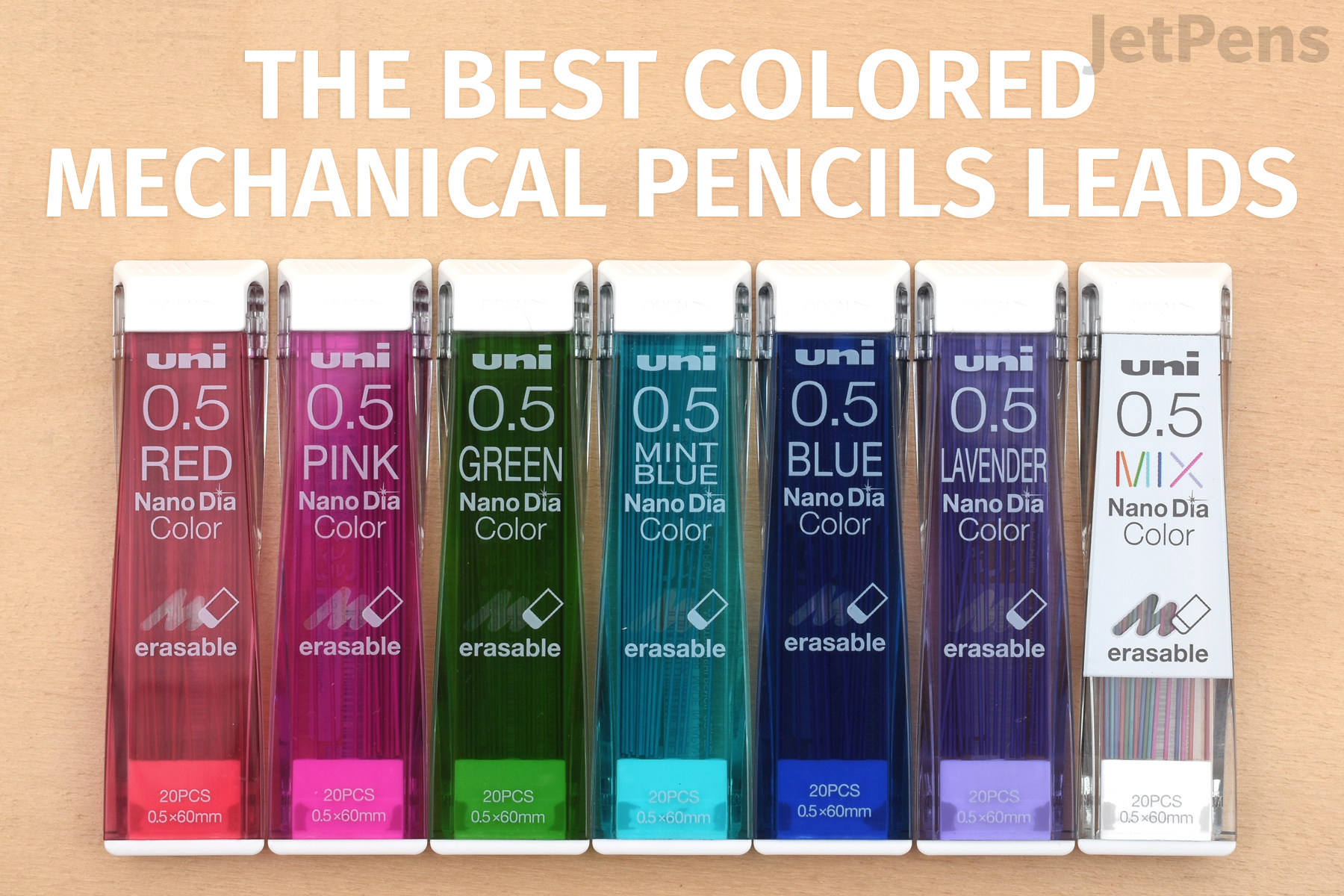
Do you ever dream of colors beyond the dreary grays of ordinary mechanical pencil lead? Luckily, colored mechanical pencil leads aren't just a dream. These fun, convenient tools are invaluable to artists and working professionals alike. Whether you're familiar with colored leads or are simply curious about their applications, read on to see our favorites and how we use them.
What Are Colored Mechanical Pencil Leads?
Colored mechanical pencil leads are leads that use color pigments instead of graphite to derive their color. Like wooden colored pencils, they provide an alternative to the standard gray pencil. Unlike wooden colored pencils, they are fuss-free and never have to be sharpened, marrying the convenience of the mechanical pencil with the bright colors of traditional colored pencils.
Characteristics to Consider
Color
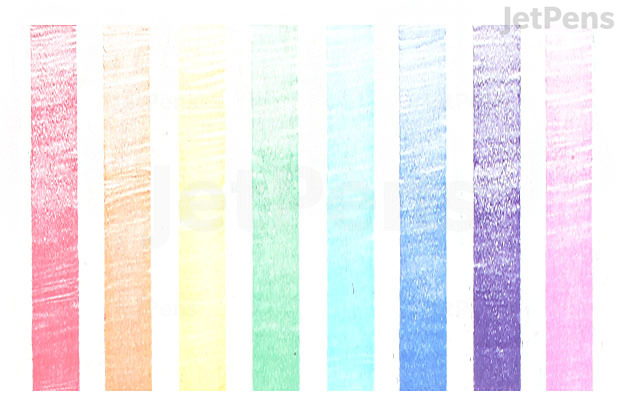
Colored leads typically come in the above eight colors.
Pencil leads are made from a mixture of pigments and binders. Where standard pencil leads use graphite as the pigment to get its distinctive gray color, colored pencil leads use colored pigments to create a variety of hues. Eight basic shades of colored mechanical pencil leads are available, though exact colors may differ across manufacturers.
Artists have long utilized colored pencil leads to enhance their work--and not just in the physical world. For example, lighter colors are easily erased or removed with Photoshop, making the transition from analog to digital that much faster and easier. On the other end of the spectrum, darker colors show up brilliantly even after scanning, though they are less likely to be erasable.
Diameter
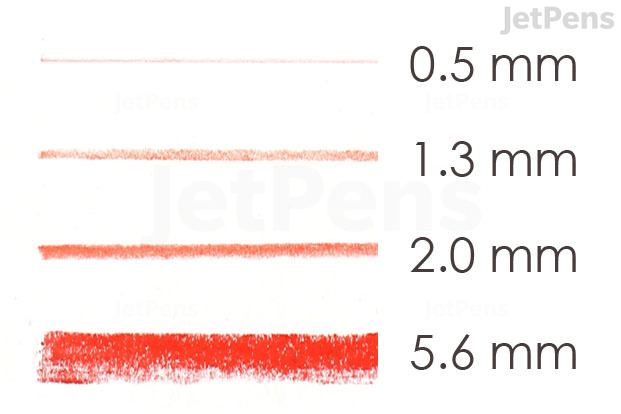
Colored leads come in a variety of diameters, from 0.5 to 5.6 mm.
The diameter or tip size of colored leads range from standard mechanical pencil sizes (0.5 or 0.7 mm) to lead holder sizes (2 mm and up). Colored mechanical pencil leads tend to be more fragile than their graphite counterparts, especially in the smaller tip sizes. Nonetheless, thin leads are great for writing or drawing small details as they produce a consistent line width and don't need to be sharpened. Using a light, delicate hand is key when dealing with thin leads.
Conversely, large diameter leads are stronger, but much less precise. They need to be sharpened regularly as they tend to dull quickly with use. However, due to their larger diameter, they can create a variety of widths with each stroke.
Erasability

Colored leads can be completely erasable or not erasable at all.
How well a lead erases depends on the composition of the lead itself as well as the amount of pressure used when writing or drawing. While graphite is readily lifted by erasers, colored mechanical pencil leads range from those that can be completely removed to those that simply refuse to budge. While this may not be an issue for some, students or accountants may prefer a lead that erases completely.
Solubility

Colored leads react to water in different ways, ranging from insoluble to soluble.
On the occasion that a pencil lead may need to be written or drawn over, it is important to know a lead's solubility. Solubility refers to how much a colored lead dissolves when in contact with a liquid medium such as water, ink, or marker (alcohol-based). Depending on the lead formula, colored mechanical pencil leads are soluble, insoluble, or resistant to liquids.
Soluble lead dissolves when exposed to different mediums, such as water or marker ink. It can be used similarly to watercolors, but may cause some pens to clog. On the other hand, insoluble leads are unaffected by water, markers, or other inks. Lastly, resistant leads will show through when written or drawn over. They may cause inks to look washed out, and even cause water to bead over top of them--lovely for resist paintings, but not conducive for getting solid black lines.
Uses for Artists
Take a peek into any artist's pencil case, and you're sure to find colored lead. Many artists rely on the convenience of colored mechanical pencils to bring dimension and greater expression to the work while keeping their work stations tidy and organized (no messy pencil shavings here!).
Sketching
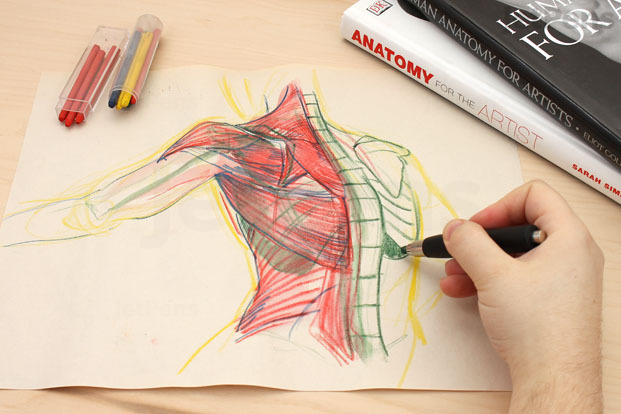
Sketching muscles and bones using large diameter colored leads.
From pen to pencil to charcoal, artists use a variety of mediums to sketch and draw. A great alternative to the standard pencil, colored mechanical pencil leads are used to show movement, bring depth, or build layers of visual information that can't be achieved by graphite alone.
Recommendations
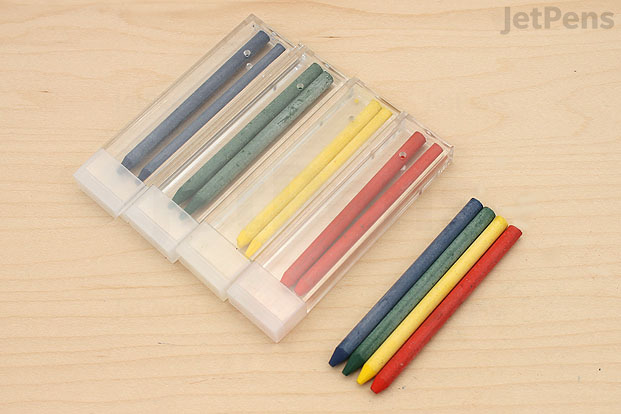
Kaweco Colored Lead
We love using large, soft pencil leads for sketching as they allow for a variety of line widths and depth of color. If you do a lot of shading, choose a lead that is water-soluble and easily smudged, like these colored leads by Kaweco.
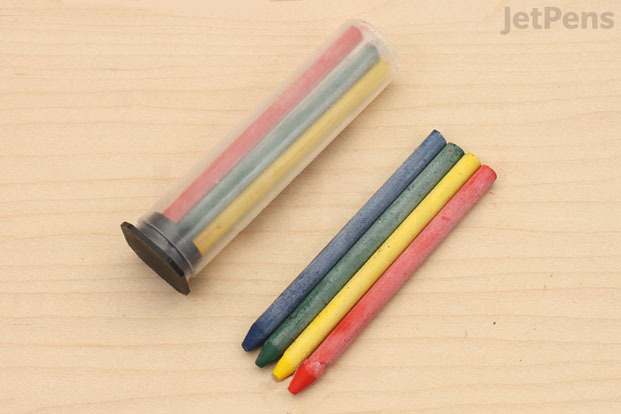
Animation

An animation sketch of a dog using red lead.
Before your favorite cartoon character appears on the TV screen, he starts out as a rough sketch of circles and lines. To do these initial drawings, animators typically use red and blue colored pencils as they are dark enough to be seen, but light enough to be outlined with ink or dark pencil. The sketches are then drawn over with a dark pencil or pen to create a clean line drawing. This drawing is then converted into a final frame of animation.
Recommendations
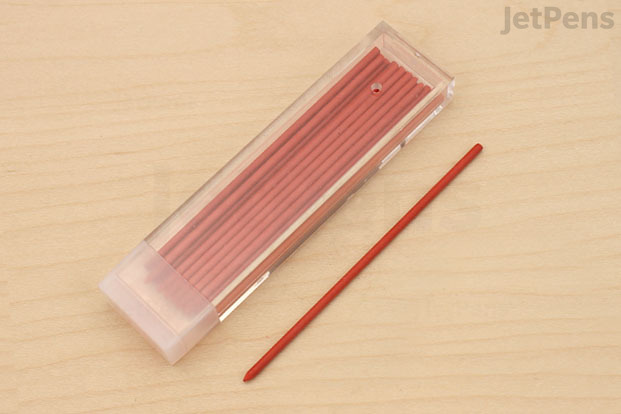
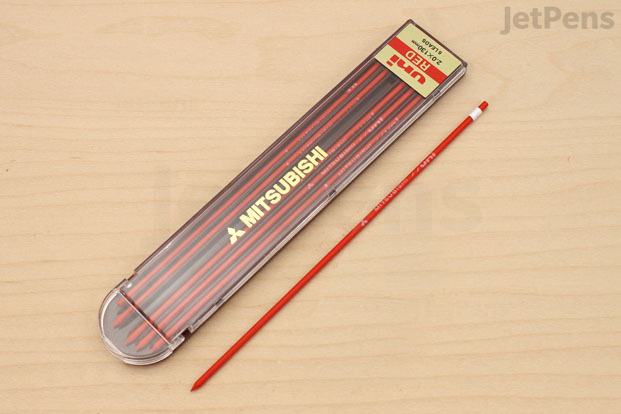
Comics

Comic artists use non-photo blue lead to create initial spreads.
Like animators, comic artists rely on colored leads to do their initial storyboarding before applying ink and other finishing touches. Non-photo blue is a popular choice among comic artists, because it is easily dropped with Photoshop, but other colors such as pink, orange, and green are also usable. In fact, using multiple colors can help an artist plan out perspective or anatomy.
Recommendations


IC Comic Draft Blue Lead - 2.0 mm
While some artists prefer erasable pencils in case of mistakes, others will simply leave the color to be dropped out digitally. The IC Comic Draft Blue lead is perfect for those who can't be bothered with an eraser--this traditional non-photo blue is readily dropped out with Photoshop.
Uses for Professionals
It's not just artists who can use colored leads! Working professionals such as accountants and teachers use colored leads on a daily basis.
Accountants

Using red lead to mark books.
Although accounting is now done digitally, many accountants and small business owners continue to do their books by hand. Some firms even require numbers to be manually validated, especially during audits. In such cases, red pencils are an invaluable tool to the accountant. The vivid color pops against the white page and stands out from the black text, allowing changes and notes to be easily seen.
Recommendations

Autopoint Lead
While red pencils are the traditional and preferred choice of many accountants, other color choices include blue and green. These colors can be used together to indicate expenditures, actions already taken, or an item for management review. We recommend the Autopoint Twin Mechanical Pencils as they come in several different color combinations of graphite, red, blue, and green. The double-ended feature makes it easy to switch between colors, and the lead is formulated to be smear-resistant.

Teachers
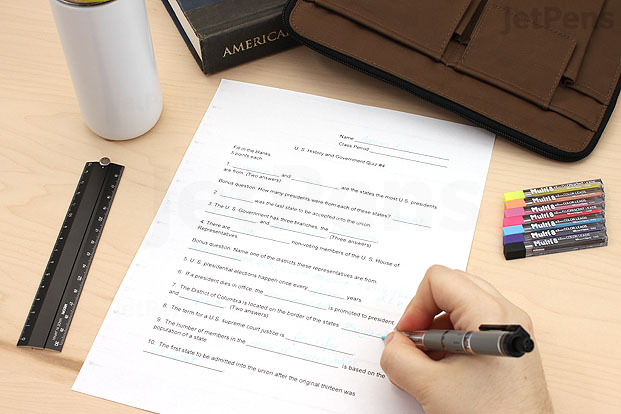
Creating an answer sheet and "clean" test in one by using non-photo blue lead.
Colored mechanical pencil leads should be a part of every teacher's arsenal. With budget cuts and restrictions on copying and printing, teachers have to be creative in how they use their resources. When drafting a test or homework, teachers can write out the answers in non-photo blue lead, creating the teacher's copy and "clean" copy in one!
Recommendations
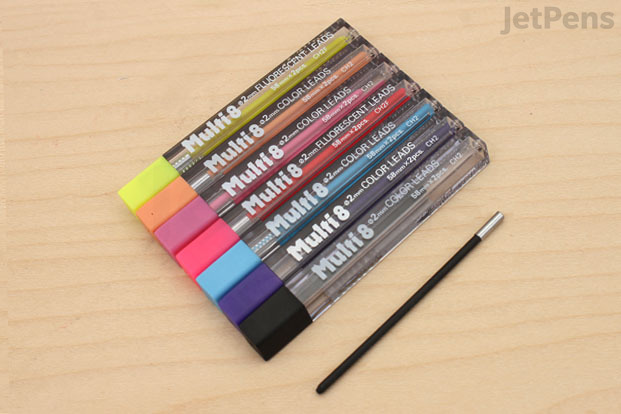
Pentel Multi 8 Lead Holder Refills - 2 mm
Non-photo blue isn't the only color that a teacher needs. The Pentel Multi 8 provides teachers with eight different lead types, including "PPC non-copy" non-photo blue. Highlighter colors are also available, making the Multi 8 system the most flexible and convenient of all colored mechanical pencil leads.

Uni NanoDia Color Lead
Another favorite pick for teachers, the Uni NanoDia Color leads feature precise tips and seven available colors, plus a mixed set. These versatile leads come in 0.5 mm and 0.7 mm lead sizes to fit in many standard mechanical pencils.
Color Testing
We put all of our colored mechanical pencil leads to the test and the results are in. The tables below are separated into general properties (such as erasability, opacity, and lead quality) and solubility (pencil, ink, marker, and water).
General Properties
Click on the colors below to see the test results.
- Swatch: All swatches were shaded from soft to hard pressure to demonstrate the full range of color. Slight inconsistencies between swatches are inevitable as more pressure is used when creating edges, sometimes creating a halo effect.
- Erasing: Eraser tests were done using a Uni Boxy Eraser.
- Smudging: We ran a finger over a half swatch to see how much the lead would smudge.
- Opacity: Swatches were done on black paper to show how opaque a lead is. The less the black background shows through, the more opaque a lead is.
- Lead Strength: This is based on the number of times the leads broke while performing tests.
Non-Photo Blue
Non-Photo Blue
Solubility
Click on the colors below to see the test results.
- Graphite Solubility: In this test, we ran an HB pencil lead over the lead swatch.
- Ink Solubility: Ink tests were performed using a Pentel Pocket Brush Pen (top) and Copic Multiliner SP (bottom).
- Marker Solubility: Marker resistance was tested using a Copic Sketch Brush Tip.
- Water Solubility: To help visualize the result of water resistance testing, we used watercolor paints over the lead swatches.
Non-Photo Blue
Non-Photo Blue
Conclusion
We hope you've enjoyed this foray into the magical world of colored leads. Do you use colored mechanical pencil leads? We would love to hear how you use them in the comments below!
Related Posts
best lead pencil for drawing
Source: https://www.jetpens.com/blog/The-Best-Colored-Mechanical-Pencil-Leads/pt/833
Posted by: tedderdiecaut.blogspot.com

0 Response to "best lead pencil for drawing"
Post a Comment